Review: Devinci Chainsaw - Primed for the Bike Park
To be over-biked or under-biked? That is the question when it comes to choosing an enduro bike. With 170mm of front and rear travel, Devinci’s Chainsaw leans towards the squisher end for pedal-worthy bikes. There’s a heavy focus on gravity riding as the frame allows for another configuration that creeps toward the numbers typically found on downhill bikes.
The Canadian-made alloy frame comes at reasonable prices too, with four ways to select a Chainsaw bike: two enduro builds with dual 29” wheels start at $3,899 USD, a DH-spec that will require an uplift, and a frame kit. SRAM and RockShox take care of all suspension, braking, and drivetrain pieces.
Back in April, we published our First Ride impressions and covered all of the specifics of the Chainsaw with a First Ride. In those three months, we’ve put the Chainsaw through soggy spring pedal missions and countless laps in bone-dry bike parks to investigate each configuration to share how the performance and durability rank.
Devinci Chainsaw Details
• 6061 T6 aluminum frame made in Canada w/ lifetime warranty
• Enduro configuration: 170mm front and rear travel, 29" wheels
• DH configuration: 190mm front/170 rear travel, mixed wheels
• Super Boost 157mm rear hub spacing
• 62.1-62.9° head tube angle
• 79.6° seat angle (MD)
• Sizes: S, M, L, XL
• Reach: 449, 469, 494, 519mm
• Chainstay: 425, 430, 435, 440mm (static)
• Weight: 16.3 kg / 35.9 lb (MD - GX model)
• Complete price: $3,899-4,999 USD / $4,799-5,999 CAD
• Frame only: $2,599 USD / $3,399 CAD
• Devinci.com
• 6061 T6 aluminum frame made in Canada w/ lifetime warranty
• Enduro configuration: 170mm front and rear travel, 29" wheels
• DH configuration: 190mm front/170 rear travel, mixed wheels
• Super Boost 157mm rear hub spacing
• 62.1-62.9° head tube angle
• 79.6° seat angle (MD)
• Sizes: S, M, L, XL
• Reach: 449, 469, 494, 519mm
• Chainstay: 425, 430, 435, 440mm (static)
• Weight: 16.3 kg / 35.9 lb (MD - GX model)
• Complete price: $3,899-4,999 USD / $4,799-5,999 CAD
• Frame only: $2,599 USD / $3,399 CAD
• Devinci.com
Contents
Frame Details
![photo]()
![Review Devinci Chainsaw Photos Tom Richards]()
Often confused with the Spartan HP, Devinci’s carbon enduro bike, the Chainsaw shares the same suspension design and a similar shadow, albeit less sculpted. The Chainsaw is not just an aluminum version of that bike though. With 170mm of rear wheel travel, 10mm more than the Spartan HP, the greatest differentiator is the slacker geometry and ability to convert to DH-mode.
Devinci also relocates the main pivot on the front triangle of each of the four individual frame sizes to tailor the chainstay length accordingly. Those measure in at 425mm for the size SM frame and increase by 5mm as you move up the sizing chart.
All of the cables run internally and the drive-side derailleur casing takes a route through the enclosed idler guide that is placed below and behind the main pivot. The rear hub spacing runs 157mm wide, which coincides with the majority of DH bikes.
On the lower shock mount is an offset chip. Devinci primarily intended for this to be a geometry corrector depending on the wheel size you choose, the lower for a 29" wheel and the raised offset for a 27.5". In the lower flip-chip setting with a 29” rear wheel and 170mm single crown fork, the Chainsaw’s front center is splayed out with a 62.9-degree head tube angle. Placing the offset chip in the upper position to increase the head angle wouldn't be out of the question. Clearly, Devinci is targeting riders seeking higher bike park speeds and fewer hairpin switchbacks.
To switch the Chainsaw over to DH-mode, you’ll want a 190mm dual-crown fork, narrow range cassette and a fixed seat post. Oddly enough, the rear shock on the DH Chainsaw arrives with a 70mm stroke shock, but that can be bumped up to 180mm of travel by lengthening the stroke to 75mm. A cool aspect of the Chainsaw is that you can mix and match the rear wheel and shock stroke sizes without any constraints.

One bike, two modes. You can run either rear wheel size, a dual-crown fork, and choose between 170 or 180mm of rear wheel travel without limitations.

Quick-release thru-axle skewers - my shins wish these would disappear. Fortunately, you can replace this one with the flush-head axle found on the Spartan HP.
Often confused with the Spartan HP, Devinci’s carbon enduro bike, the Chainsaw shares the same suspension design and a similar shadow, albeit less sculpted. The Chainsaw is not just an aluminum version of that bike though. With 170mm of rear wheel travel, 10mm more than the Spartan HP, the greatest differentiator is the slacker geometry and ability to convert to DH-mode.
Devinci also relocates the main pivot on the front triangle of each of the four individual frame sizes to tailor the chainstay length accordingly. Those measure in at 425mm for the size SM frame and increase by 5mm as you move up the sizing chart.
All of the cables run internally and the drive-side derailleur casing takes a route through the enclosed idler guide that is placed below and behind the main pivot. The rear hub spacing runs 157mm wide, which coincides with the majority of DH bikes.
On the lower shock mount is an offset chip. Devinci primarily intended for this to be a geometry corrector depending on the wheel size you choose, the lower for a 29" wheel and the raised offset for a 27.5". In the lower flip-chip setting with a 29” rear wheel and 170mm single crown fork, the Chainsaw’s front center is splayed out with a 62.9-degree head tube angle. Placing the offset chip in the upper position to increase the head angle wouldn't be out of the question. Clearly, Devinci is targeting riders seeking higher bike park speeds and fewer hairpin switchbacks.
To switch the Chainsaw over to DH-mode, you’ll want a 190mm dual-crown fork, narrow range cassette and a fixed seat post. Oddly enough, the rear shock on the DH Chainsaw arrives with a 70mm stroke shock, but that can be bumped up to 180mm of travel by lengthening the stroke to 75mm. A cool aspect of the Chainsaw is that you can mix and match the rear wheel and shock stroke sizes without any constraints.
Suspension Design
Split-Pivot, high-pivot, blind pivot - what does that all mean? Devinci has used Split-Pivot suspension, in one form or another, for more than a decade. It takes a standard four-bar system and combines the dropout pivot to co-rotate around the rear axle.
The Chainsaw continues with Split-Pivot and places the main pivot well above the chain ring. This necessitates an idler pulley to alleviate chain growth caused by the rearward axle path.
A two-piece rocker link compresses the lengthy 225x70mm shock at a lower leverage rate than the Spartan HP too. Strangely enough, there’s no lock-out switch on the RockShox Super Deluxe air shocks that come on the Enduro SX or GX model Chainsaws. What's more perplexing than an enduro bike without a climb switch these days? A DH bike with one. The Chainsaw DH bike comes with a Super Deluxe Coil that does have a lock-out lever and strangely enough doesn't maximize all of the possible rear wheel travel. The stock Super Deluxe Coil arrives at 70mm on the DH model.
Split-Pivot, high-pivot, blind pivot - what does that all mean? Devinci has used Split-Pivot suspension, in one form or another, for more than a decade. It takes a standard four-bar system and combines the dropout pivot to co-rotate around the rear axle.
The Chainsaw continues with Split-Pivot and places the main pivot well above the chain ring. This necessitates an idler pulley to alleviate chain growth caused by the rearward axle path.
A two-piece rocker link compresses the lengthy 225x70mm shock at a lower leverage rate than the Spartan HP too. Strangely enough, there’s no lock-out switch on the RockShox Super Deluxe air shocks that come on the Enduro SX or GX model Chainsaws. What's more perplexing than an enduro bike without a climb switch these days? A DH bike with one. The Chainsaw DH bike comes with a Super Deluxe Coil that does have a lock-out lever and strangely enough doesn't maximize all of the possible rear wheel travel. The stock Super Deluxe Coil arrives at 70mm on the DH model.
| Specifications | ||
| Release Date | 2023 | |
| Price | $4999 | |
| Travel | 170 | |
| Rear Shock | RockShox SuperDeluxe Select R DebonAir, 225x70T | |
| Fork | Rockshox Zeb Rush RC DebonAir 170, 44 Offset | |
| Headset | FSA Orbit | |
| Cassette | SRAM XG1275, 10-52T | |
| Crankarms | SRAM GX Eagle | |
| Chainguide | E*Thirteen LG1 Lower Slider | |
| Bottom Bracket | SRAM DUB BSA 73mm | |
| Rear Derailleur | SRAM GX Eagle 12 spd | |
| Chain | SRAM NX Eagle 12 spd | |
| Shifter Pods | SRAM GX Eagle 12 spd | |
| Handlebar | RaceFace Aeffect R35 | B:35mm | R:20mm | W:780mm | |
| Stem | V2 Pro 35. 40mm length, 0° rise | |
| Grips | Devinci Performance, lock-on | |
| Brakes | SRAM G2 RE w 200mm Centerline rotors F&R | |
| Hubs | Factor XD601SB/A | |
| Spokes | Sapim Stainless 14G w/Nylok | |
| Rim | RaceFace AR30 | |
| Tires | Maxxis Minion DHF 29x2.5 3C MaxxTerra Exo+, Minion DHRII | 29x2.4 3C MaxxGrip DoubleDown | |
| Seat | SDG FLY MTN | |
| Seatpost | TranzX 34.9mm 1x Lever | |
Test Bike Setup
When I set up the Super Deluxe on the enduro bike, I started by matching my body weight to the air spring pressure in empirical units; 170. After the first ride, I bumped that up since the bike rode too deep in the travel for my liking. 175 PSI landed me at 26% sag and the bike became less soggy.
After bolting on the 190mm Boxxer, I pumped it up to 165 psi and played with 400 and 450 lb/in springs to hover on either side of 30% sag out back. Since the reach shortens by 8mm with the longer fork, I installed wider bars too.
Based on the sizing chart for the Chainsaw, I fall smack dab in the overlap between the size MD and LG. I primarily look at the reach of the frame to start with sizing, but it’s important to keep an eye on the wheelbase and also the top tube length. Based on my experience with other bikes in this dimension, I knew the MD, with a reach of 469 would be the most appropriate fit.
Like most bikes that come in for review, I gave the stock bar and stem a chance. The 20mm rise bar seemed a little low for my taste and for the slack head tube angle, I swapped out the stem for a 35mm length to slow down the swing of the steering.
A trade-off of raising the bar height was how it chewed into the length of the seated position. Based on the slack head tube and steep seat tube, the cockpit felt on the tight side. Positioning the saddle in the middle of the rails helped to alleviate the effective top tube length.
Devinci suggests between 25-30% sag on the Chainsaw, but that could vary depending on the configuration you have at hand and what dynamics you’re looking for from the bike.
Like most bikes that come in for review, I gave the stock bar and stem a chance. The 20mm rise bar seemed a little low for my taste and for the slack head tube angle, I swapped out the stem for a 35mm length to slow down the swing of the steering.
A trade-off of raising the bar height was how it chewed into the length of the seated position. Based on the slack head tube and steep seat tube, the cockpit felt on the tight side. Positioning the saddle in the middle of the rails helped to alleviate the effective top tube length.
Devinci suggests between 25-30% sag on the Chainsaw, but that could vary depending on the configuration you have at hand and what dynamics you’re looking for from the bike.
When I set up the Super Deluxe on the enduro bike, I started by matching my body weight to the air spring pressure in empirical units; 170. After the first ride, I bumped that up since the bike rode too deep in the travel for my liking. 175 PSI landed me at 26% sag and the bike became less soggy.
After bolting on the 190mm Boxxer, I pumped it up to 165 psi and played with 400 and 450 lb/in springs to hover on either side of 30% sag out back. Since the reach shortens by 8mm with the longer fork, I installed wider bars too.
Climbing
Here’s proof that not every enduro bike we test “climbs like a goat”. I never expected a 16.3 kg bike to motor uphill, but if you aren't regularly shuttling or lapping a chairlift, you might want to consider a few component changes.
What’s the first thing you do when you transition to pedal uphill - flick the climb switch, right? There isn’t one to be found on the Chainsaw SX or GX enduro builds. A high-pivot bike with 170mm of rear wheel travel needs all the help it can get to climb well.
Anyone who’s tried a high-pivot bike knows their magical powers for descending. Assuming that the bike also had an idler, it’s impossible to ignore the increased friction, even if that is as little as one percent. Add in a lower pulley that furthers the chain tension and you’ll be keeping your drivetrain meticulously clean for efficiency points, just like Levy.
The saving grace for the Chainsaw’s climbing ability is that you’re not hanging off the back of the bike and the rear tire sticks to the ground. A steep seat tube angle and lengthening chainstay keep you from doing unwanted wheelies.
Unfortunately, that’s a two-steps forward, one back situation because the slack head angle creates a compact seat position, requiring an attentive mind to hold the bars straight. That’s not to say that slack head angles can’t climb well, but pushing those two forward-thinking numbers together smushes the cockpit space.
So what would make the Chainsaw more enjoyable to pedal?
First and foremost would be a climb switch. Strangely enough, the Chainsaw DH model comes with a Super Deluxe Coil Select+ RT, where “T” stands for “Threshold”, or climb switch - go figure.
Next would be a longer dropper post. Heck, I even tried to track down a 39.3mm quick-release collar for less fiddling to change directions on the hill. There’s 270mm of real estate in the seat tube so in theory, a 180mm-travel OneUp Dropper post (267mm insertion length) would do the trick.
I also removed the lower pulley to reduce every machine’s worst enemy; friction. Once that left the chat after the second ride, it felt like the handbrake was released. Over the course of review, I never dropped a chain once. You can expect the chain and ring to wear at a higher rate since it will wiggle side to side with the reduced tension.
Here’s proof that not every enduro bike we test “climbs like a goat”. I never expected a 16.3 kg bike to motor uphill, but if you aren't regularly shuttling or lapping a chairlift, you might want to consider a few component changes.
What’s the first thing you do when you transition to pedal uphill - flick the climb switch, right? There isn’t one to be found on the Chainsaw SX or GX enduro builds. A high-pivot bike with 170mm of rear wheel travel needs all the help it can get to climb well.
Anyone who’s tried a high-pivot bike knows their magical powers for descending. Assuming that the bike also had an idler, it’s impossible to ignore the increased friction, even if that is as little as one percent. Add in a lower pulley that furthers the chain tension and you’ll be keeping your drivetrain meticulously clean for efficiency points, just like Levy.
The saving grace for the Chainsaw’s climbing ability is that you’re not hanging off the back of the bike and the rear tire sticks to the ground. A steep seat tube angle and lengthening chainstay keep you from doing unwanted wheelies.
Unfortunately, that’s a two-steps forward, one back situation because the slack head angle creates a compact seat position, requiring an attentive mind to hold the bars straight. That’s not to say that slack head angles can’t climb well, but pushing those two forward-thinking numbers together smushes the cockpit space.
So what would make the Chainsaw more enjoyable to pedal?
First and foremost would be a climb switch. Strangely enough, the Chainsaw DH model comes with a Super Deluxe Coil Select+ RT, where “T” stands for “Threshold”, or climb switch - go figure.
Next would be a longer dropper post. Heck, I even tried to track down a 39.3mm quick-release collar for less fiddling to change directions on the hill. There’s 270mm of real estate in the seat tube so in theory, a 180mm-travel OneUp Dropper post (267mm insertion length) would do the trick.
I also removed the lower pulley to reduce every machine’s worst enemy; friction. Once that left the chat after the second ride, it felt like the handbrake was released. Over the course of review, I never dropped a chain once. You can expect the chain and ring to wear at a higher rate since it will wiggle side to side with the reduced tension.
Descending
Enduro Mode: The Chainsaw doesn’t have one foot in because 62.9 degree is aggressive for a enduro bike and I dig it. Really, it’s built for the kind of rider that wants to retire their old school downhill bike and take advantage of all the trails on the mountain. They’ll still prioritize shuttling but with a dropper post and low gearing, getting off to push up the slightest incline won’t be necessary.
If you’re focusing on enduro racing specifically, I’d look towards the Spartan HP. The steeper head angle will respond quicker at lower speeds. With that said, the Chainsaw’s long front center doesn’t feel twitchy at speed and you can correct understeering through slippery corners as if time is slowed down. That will bring confidence for all types of riders in dusty berms and slimy roots.
Countering the negative climbing attributes about the Chainsaw, the descending qualities are top notch. The ride is buttery, quiet, and intuitive. Too much progression or wallowing wasn’t a worry, even with the air shock.
A cloud-like ride is controlled by the lengthy Super Deluxe shock. Often air shocks can have a tough time breaking into the travel smoothly and even taper off the support in the middle of the travel. That’s not the case on the Chainsaw.
DH Mode: I see a lot of riders on full-fledged DH bikes these days that wouldn’t dare sign up for a race and wonder if they’d be better off wielding a hopped-up freeride bike - one with a serious amount of travel that still comes unglued from the trail when directed - like a Chainsaw.
Hanging onto a bike in a downhill race can require serious weight shifts off the back of the bike. Switching out for the smaller rear wheel adds to the backside clearance for those huck-a-buck moments and helps the Chainsaw whip around corners even quicker.
Devinci advises that the fork bumpers contact the downtube. In the case of the RockShox Boxxer, this does limit the turning radius significantly. My concerns here were noticed when I tried to turn the bars and squash jumps or get sideways in the air - never in any corners you’d find on a downhill track, though.
A 50mm stem and 56mm offset was chosen for the Chainsaw DH. On bikes with head angles as slack as this one at 62.1 degrees (DH-mode), I’d prefer the shorter 46mm option that seems less detached from the steering input. A shorter stem would produce more intuitive steering. You’ll also lose 8mm of reach in DH-mode.
Switching out for the Super Deluxe Coil and an extra 10mm of travel is a subtle change. The air is impressively smooth, but the coil does give you a more linear feel through the mid-stroke. Basically, the bike rides a bit deeper and means you’ll have to yank harder to get the bike off the ground if no jumps are present.
I toyed with a 400 and 450 lb/in spring, seeing the benefits of both. Keeping one of each around different tracks or freeride days would be a sensible plan. On the softer side, I took advantage of the hydraulic bottom out dial on the Super Deluxe Coil and ran four fifths of the way closed. It’s enough to take the sting out of flattening the shock slower, whereas the air controls the end of the travel by ramping sooner and has a less mechanical feel.
After logging serious miles on the Chainsaw, there were a few talking points on the durability of the frame and servicing of the drivetrain.
The cable routing is ultra quiet and doesn’t wander as the suspension articulates. Similarly, the chain chatter is non-existent. I’d prefer to have a guide similar to what Norco placed on the Range - a slider that doesn’t put tension on the chain but still protects it.
I did have to keep an eye on the main rocker and seatstay pivot bolts. If this happens on a bike for review, I’ll let it go the first time around. On the second time around, I’ll fully clean the threaded bits and rebuild them accordingly. Luckily, a third occurrence didn’t happen but it’s worth keeping an eye on for the first few outings.
Enduro Mode: The Chainsaw doesn’t have one foot in because 62.9 degree is aggressive for a enduro bike and I dig it. Really, it’s built for the kind of rider that wants to retire their old school downhill bike and take advantage of all the trails on the mountain. They’ll still prioritize shuttling but with a dropper post and low gearing, getting off to push up the slightest incline won’t be necessary.
If you’re focusing on enduro racing specifically, I’d look towards the Spartan HP. The steeper head angle will respond quicker at lower speeds. With that said, the Chainsaw’s long front center doesn’t feel twitchy at speed and you can correct understeering through slippery corners as if time is slowed down. That will bring confidence for all types of riders in dusty berms and slimy roots.
Countering the negative climbing attributes about the Chainsaw, the descending qualities are top notch. The ride is buttery, quiet, and intuitive. Too much progression or wallowing wasn’t a worry, even with the air shock.
A cloud-like ride is controlled by the lengthy Super Deluxe shock. Often air shocks can have a tough time breaking into the travel smoothly and even taper off the support in the middle of the travel. That’s not the case on the Chainsaw.
DH Mode: I see a lot of riders on full-fledged DH bikes these days that wouldn’t dare sign up for a race and wonder if they’d be better off wielding a hopped-up freeride bike - one with a serious amount of travel that still comes unglued from the trail when directed - like a Chainsaw.
Hanging onto a bike in a downhill race can require serious weight shifts off the back of the bike. Switching out for the smaller rear wheel adds to the backside clearance for those huck-a-buck moments and helps the Chainsaw whip around corners even quicker.
Devinci advises that the fork bumpers contact the downtube. In the case of the RockShox Boxxer, this does limit the turning radius significantly. My concerns here were noticed when I tried to turn the bars and squash jumps or get sideways in the air - never in any corners you’d find on a downhill track, though.
A 50mm stem and 56mm offset was chosen for the Chainsaw DH. On bikes with head angles as slack as this one at 62.1 degrees (DH-mode), I’d prefer the shorter 46mm option that seems less detached from the steering input. A shorter stem would produce more intuitive steering. You’ll also lose 8mm of reach in DH-mode.
Switching out for the Super Deluxe Coil and an extra 10mm of travel is a subtle change. The air is impressively smooth, but the coil does give you a more linear feel through the mid-stroke. Basically, the bike rides a bit deeper and means you’ll have to yank harder to get the bike off the ground if no jumps are present.
I toyed with a 400 and 450 lb/in spring, seeing the benefits of both. Keeping one of each around different tracks or freeride days would be a sensible plan. On the softer side, I took advantage of the hydraulic bottom out dial on the Super Deluxe Coil and ran four fifths of the way closed. It’s enough to take the sting out of flattening the shock slower, whereas the air controls the end of the travel by ramping sooner and has a less mechanical feel.
After logging serious miles on the Chainsaw, there were a few talking points on the durability of the frame and servicing of the drivetrain.
The cable routing is ultra quiet and doesn’t wander as the suspension articulates. Similarly, the chain chatter is non-existent. I’d prefer to have a guide similar to what Norco placed on the Range - a slider that doesn’t put tension on the chain but still protects it.
I did have to keep an eye on the main rocker and seatstay pivot bolts. If this happens on a bike for review, I’ll let it go the first time around. On the second time around, I’ll fully clean the threaded bits and rebuild them accordingly. Luckily, a third occurrence didn’t happen but it’s worth keeping an eye on for the first few outings.
Technical Report
SRAM G2 RE Brakes: Hitting a certain MSRP can’t be an easy task for a product manager, but everyone needs stronger brakes. Beginners require brakes that don’t fade because they haven’t yet developed practical braking habits. Experts need brakes that deliver the power quicker. Either way, the G2 REs were underwhelming, and to be fair, most brakes on the market are. Sticky pistons caused the pads to rub and the lever to feel inconsistent.
Super Deluxe (air): Looking past the lack of a lockout, the Super Deluxe is a standout component on the Chainsaw. Once the air pressure was dialled in, I found generous support through the middle of the travel and never needed to play with volume spacers.
ZEB Rush RC: This chassis would let you tack on most of the hop-ups to turn the fork into a ZEB Ultimate, like the pressure relief valves, Buttercups, and Charger 3. The performance was primo as is, especially considering the total price of the Chainsaw GX. Singular rebound and compression adjusters let you dial in your settings with less tinkering.
SRAM G2 RE Brakes: Hitting a certain MSRP can’t be an easy task for a product manager, but everyone needs stronger brakes. Beginners require brakes that don’t fade because they haven’t yet developed practical braking habits. Experts need brakes that deliver the power quicker. Either way, the G2 REs were underwhelming, and to be fair, most brakes on the market are. Sticky pistons caused the pads to rub and the lever to feel inconsistent.
Super Deluxe (air): Looking past the lack of a lockout, the Super Deluxe is a standout component on the Chainsaw. Once the air pressure was dialled in, I found generous support through the middle of the travel and never needed to play with volume spacers.
ZEB Rush RC: This chassis would let you tack on most of the hop-ups to turn the fork into a ZEB Ultimate, like the pressure relief valves, Buttercups, and Charger 3. The performance was primo as is, especially considering the total price of the Chainsaw GX. Singular rebound and compression adjusters let you dial in your settings with less tinkering.
Which Model is the Best Value?
Since the Chainsaw only has two models in the enduro class, the choice would be straightforward for me. Both build kits use the same rear shock, but nearly all of the other components are bumped up a notch on the GX build.
For an extra $800, there’s a lighter and crispier drivetrain, plus 4-piston brakes. The ZEB fork is also 200g lighter than the Domain and has a compression adjuster.
Since the Chainsaw only has two models in the enduro class, the choice would be straightforward for me. Both build kits use the same rear shock, but nearly all of the other components are bumped up a notch on the GX build.
For an extra $800, there’s a lighter and crispier drivetrain, plus 4-piston brakes. The ZEB fork is also 200g lighter than the Domain and has a compression adjuster.
How Does It Compare?
Considering that the Devinci Chainsaw and the Norco Range are two high-pivot bikes that are equal in travel, they are worlds apart in terms of construction. The Range’s fighter jet looks while the Chainsaw features a more rudimentary four-bar appearance. One requires carbon construction and a mesmerizing amount of hardware, the other has Canadian-made alloy tubes, fewer bolts, and requires less patience to wrench on.
Even with its precious carbon tubes, the Range is heavier, especially the comparable C3 build. The entry level price of the Range C3 puts it $1,100 USD above the Chainsaw GX, where as the Range C1 is nearly five figures.
Then there are multiple ways to build each bike, or so it seems. Norco has been racing the Range frame at DH races for the last three seasons and despite the fact that aftermarket suspension tuning brands, like WRP and Cascade, have been building linkage components for the Range, no official parts are available. Norco is also insistent that the Range is complex and designed specifically around dual 29” wheels too.
Devinci takes a user-friendly approach with fewer limitations. Other than toggling the flip-chip, no parts are needed to switch between rear wheel sizes. Heck, you could even run the enduro setup with the longer rear shock.
According to both brand’s fit guides, I landed on the correct size for each bike, a medium for the Chainsaw and a large Range. The Range’s wheelbase is massive in comparison to the Chainsaw. 16mm of that lies ahead of the BB and another 12 to the back.
On flatter or flow trails, the Range takes a fair bit of determination to move around, whereas the Chainsaw is less laborious to purposefully pull the bike off the ground. I’d equate that to the shorter chainstays and lower stack which give you more leverage to drive your feet into the pedals and get your hips behind the rear wheel. On the flip-side, the Range is more stable at speed, in particular, how the rear wheel tracks through loose, flat turns predictably since your weight is planted evenly on both axles.
The decked out Range C1 isn’t a light bike, but climbing was more comfortable and balanced. A shorter seat tube and longer dropper was a huge win, plus there is a climb switch on the C3 build as well. One downside of the shocks fitted to the Range was that they are coil sprung. The Chainsaw can run either type of shock and an air spring allows for quick changes depending on the trail appetite, which is useful if you’re riding high jumps one day and slow tech the next.
Considering that the Devinci Chainsaw and the Norco Range are two high-pivot bikes that are equal in travel, they are worlds apart in terms of construction. The Range’s fighter jet looks while the Chainsaw features a more rudimentary four-bar appearance. One requires carbon construction and a mesmerizing amount of hardware, the other has Canadian-made alloy tubes, fewer bolts, and requires less patience to wrench on.
Even with its precious carbon tubes, the Range is heavier, especially the comparable C3 build. The entry level price of the Range C3 puts it $1,100 USD above the Chainsaw GX, where as the Range C1 is nearly five figures.
Then there are multiple ways to build each bike, or so it seems. Norco has been racing the Range frame at DH races for the last three seasons and despite the fact that aftermarket suspension tuning brands, like WRP and Cascade, have been building linkage components for the Range, no official parts are available. Norco is also insistent that the Range is complex and designed specifically around dual 29” wheels too.
Devinci takes a user-friendly approach with fewer limitations. Other than toggling the flip-chip, no parts are needed to switch between rear wheel sizes. Heck, you could even run the enduro setup with the longer rear shock.
According to both brand’s fit guides, I landed on the correct size for each bike, a medium for the Chainsaw and a large Range. The Range’s wheelbase is massive in comparison to the Chainsaw. 16mm of that lies ahead of the BB and another 12 to the back.
On flatter or flow trails, the Range takes a fair bit of determination to move around, whereas the Chainsaw is less laborious to purposefully pull the bike off the ground. I’d equate that to the shorter chainstays and lower stack which give you more leverage to drive your feet into the pedals and get your hips behind the rear wheel. On the flip-side, the Range is more stable at speed, in particular, how the rear wheel tracks through loose, flat turns predictably since your weight is planted evenly on both axles.
The decked out Range C1 isn’t a light bike, but climbing was more comfortable and balanced. A shorter seat tube and longer dropper was a huge win, plus there is a climb switch on the C3 build as well. One downside of the shocks fitted to the Range was that they are coil sprung. The Chainsaw can run either type of shock and an air spring allows for quick changes depending on the trail appetite, which is useful if you’re riding high jumps one day and slow tech the next.
Pros
+ Eats bumps without feeling glued to the ground at all times.
+ Excellent value, Canadian-made frame.
+ Versatile configurations for gravity focused riders.
Cons
- Climbing is a chore; no lockout on shock, short dropper, cramped seat position, pulley friction.
- The G2 RE brakes hold back the Chainsaw’s descending capabilities.
- Rocker link pivots loosened on occasion.
Author Info:
Must Read This Week
Sign Up for the Pinkbike Newsletter - All the Biggest, Most Interesting Stories in your Inbox
PB Newsletter Signup
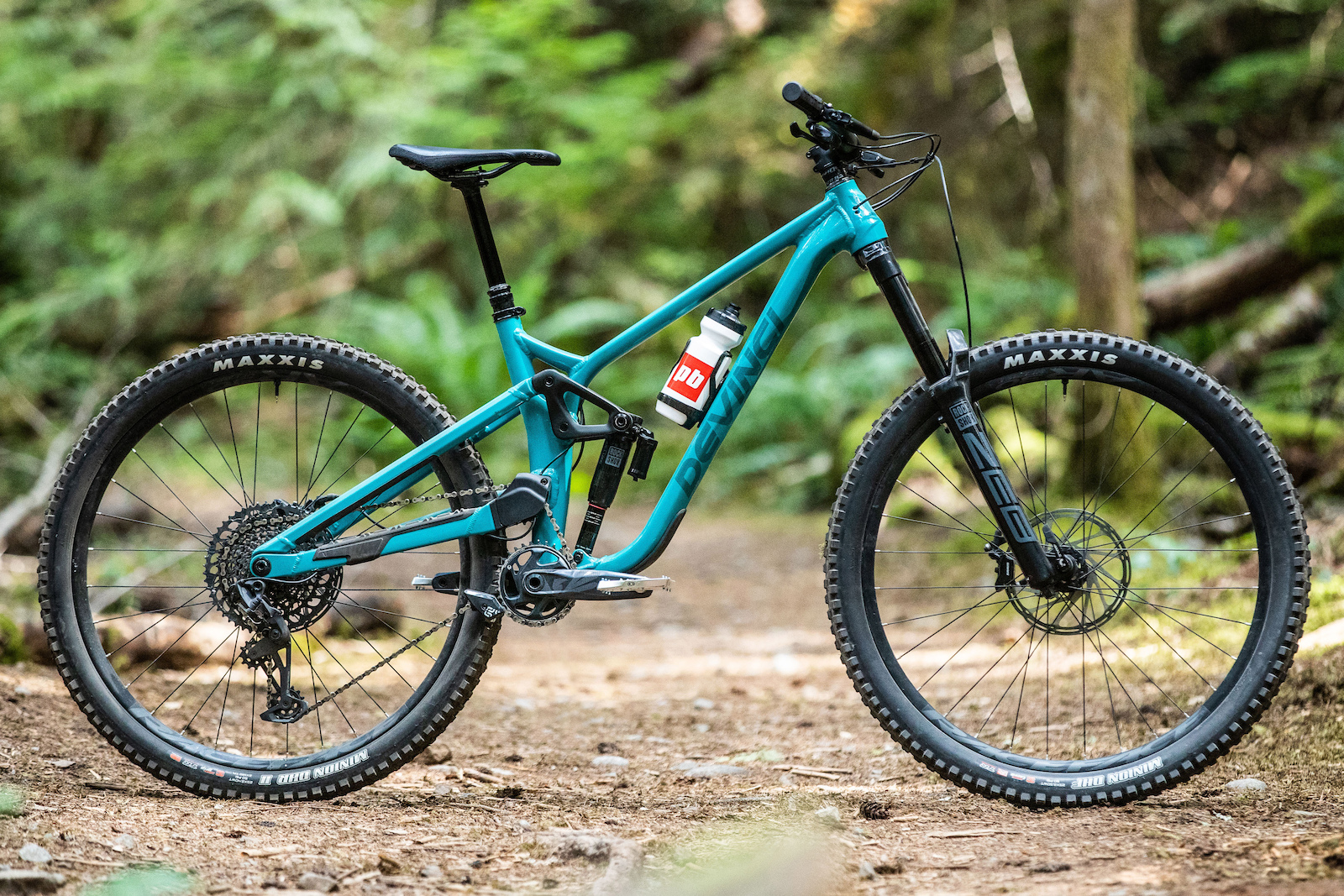
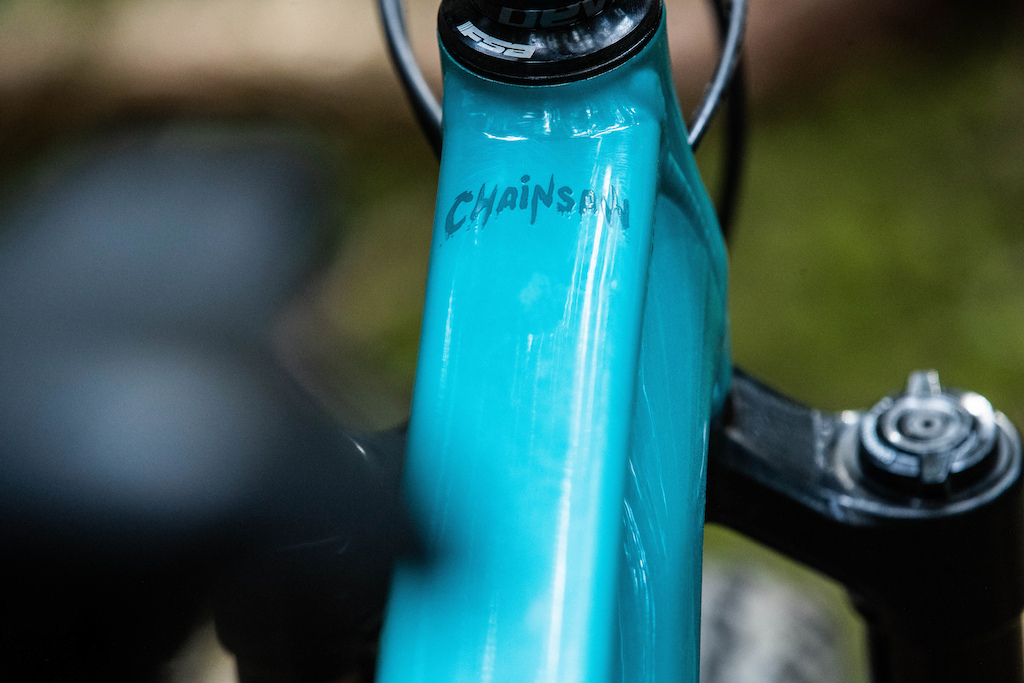
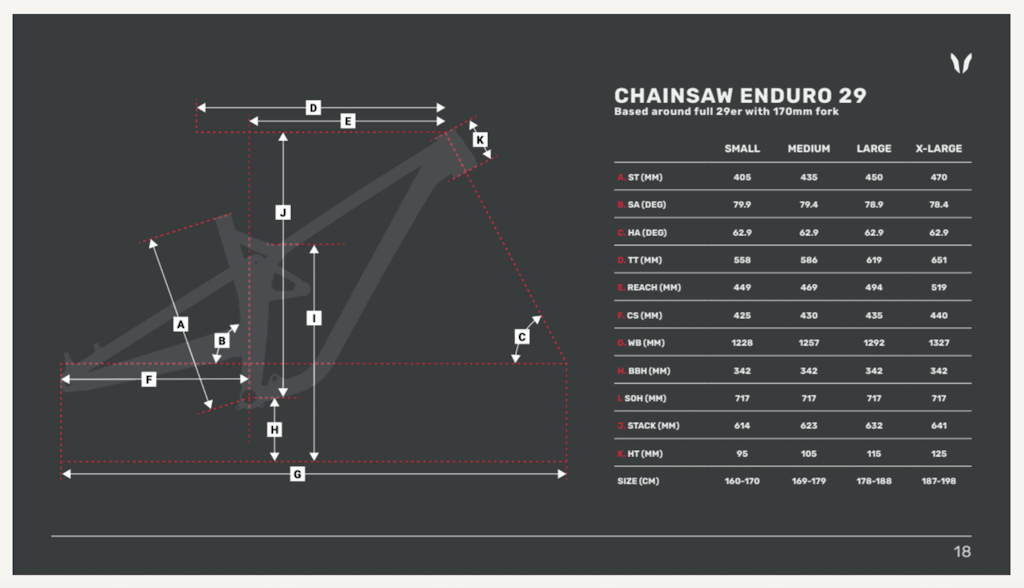
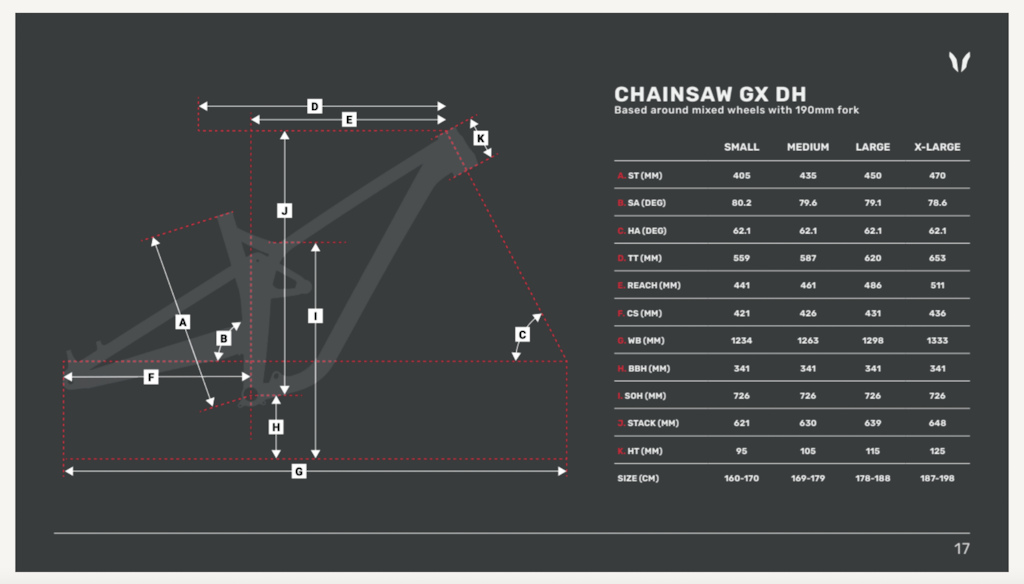

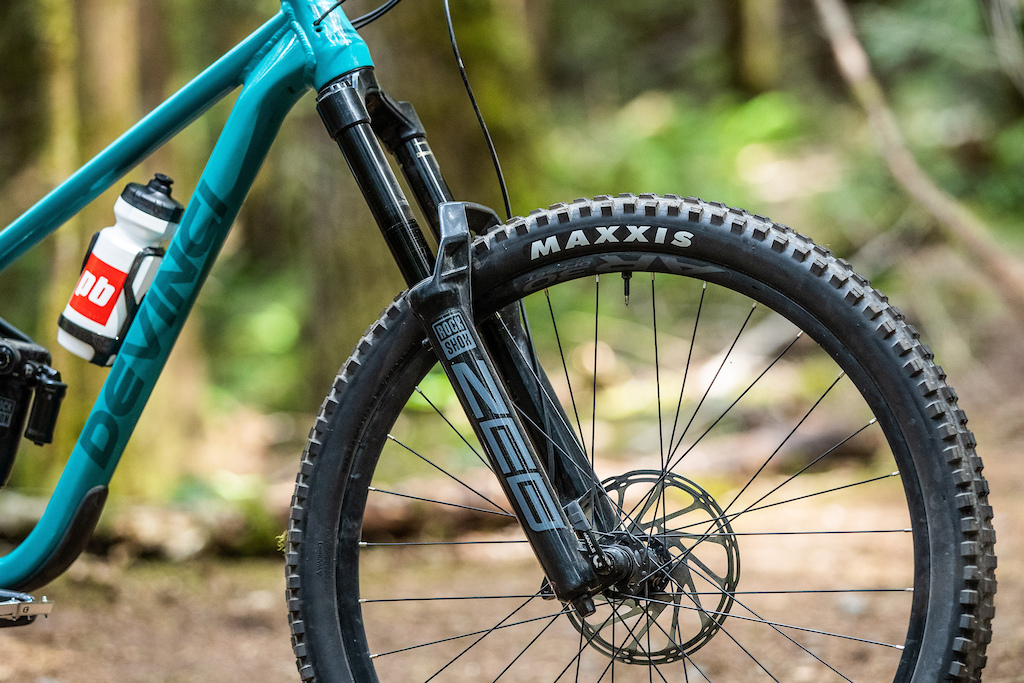

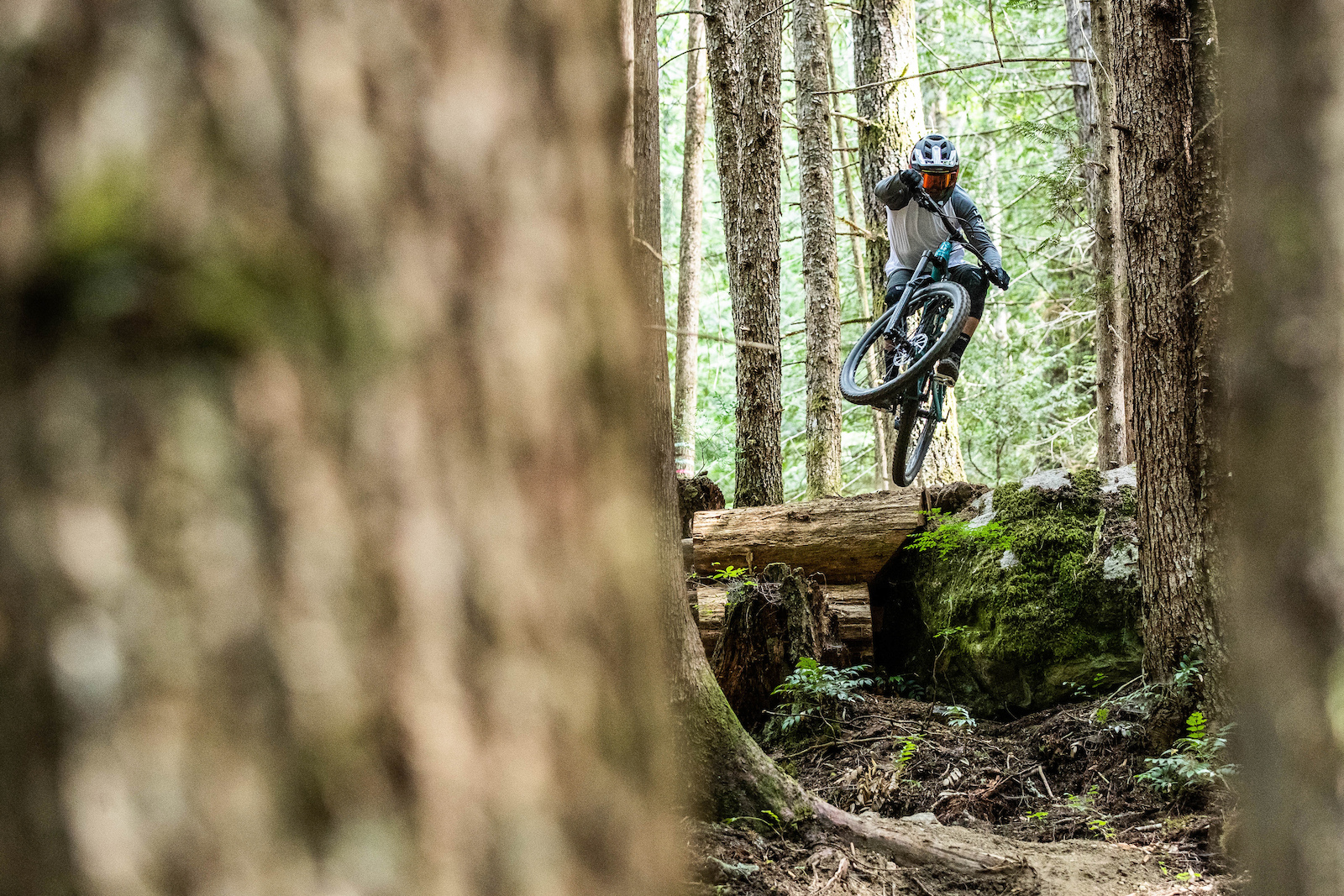

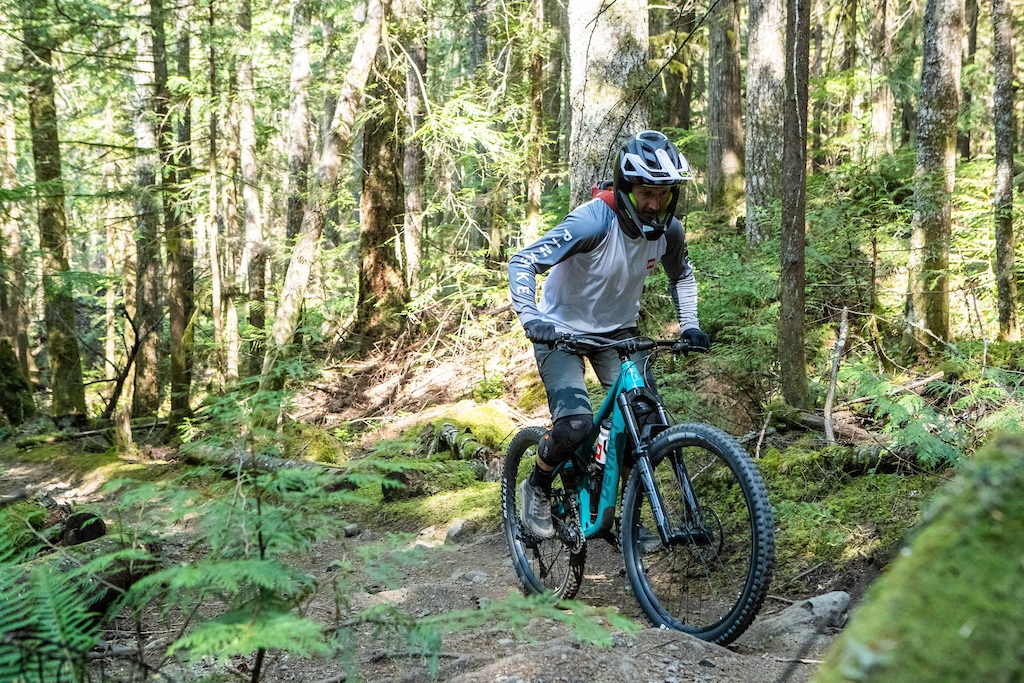

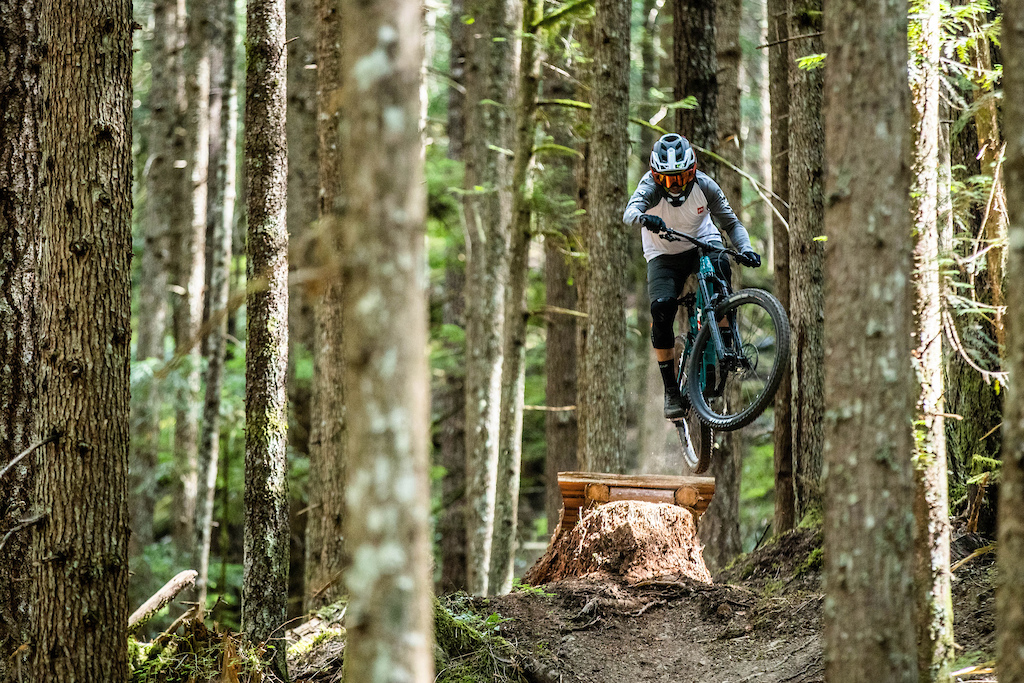


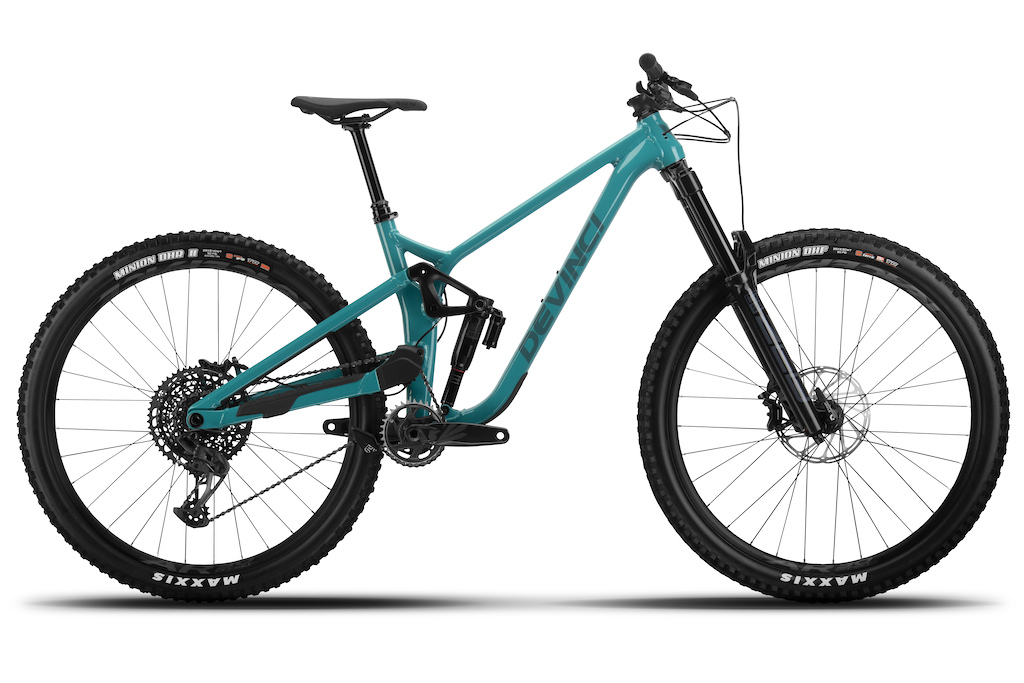
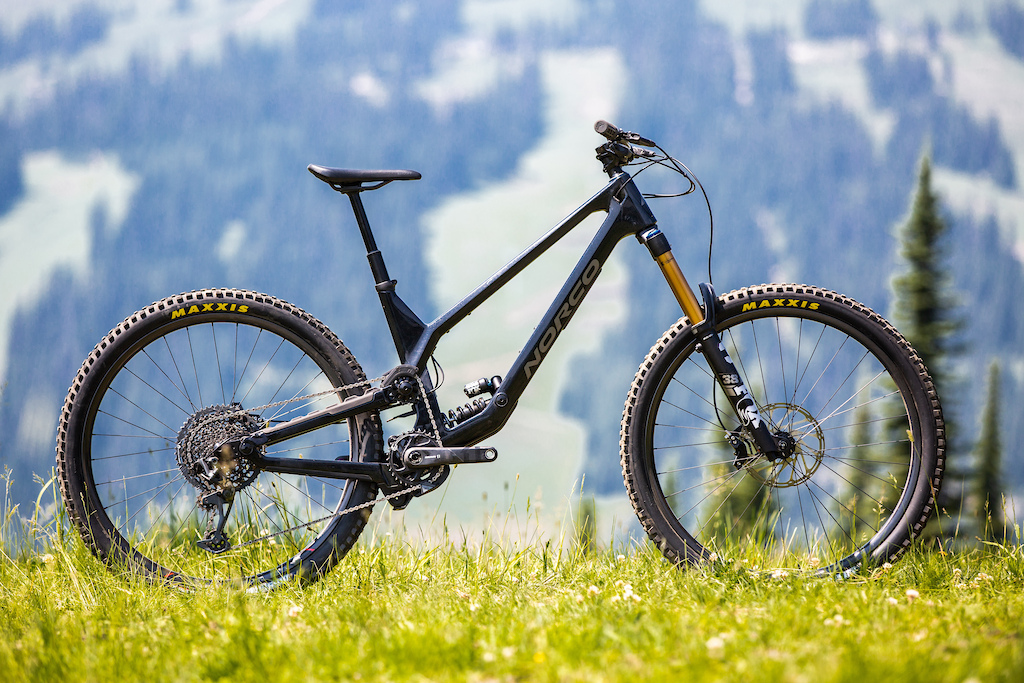
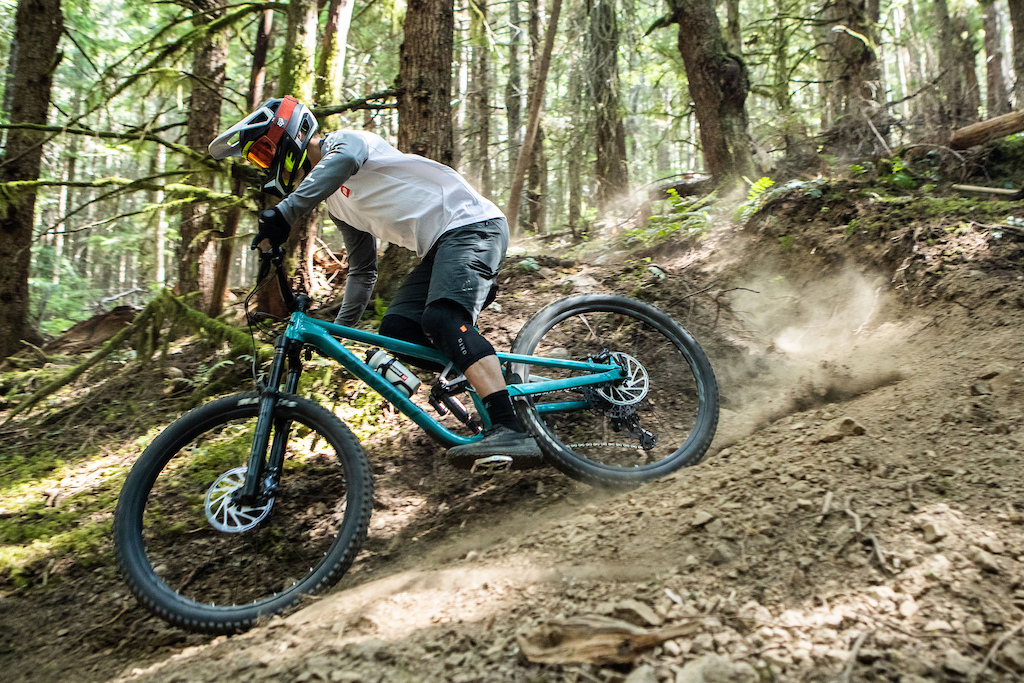

 Member since Mar 16, 2001
Member since Mar 16, 2001
That said, I’d be willing to try the RE brakes as others have mentioned for having Code calipers. I just still don’t know why that brake exists. Why have that many SKUs in your catalog?
Sid/Pike: level/g2
Lyrik: g2/code
Zeb/boxxer: code/newunreleasedbrake
@cyclesdevinci: Thanks for being in the comments. The value here is legit! Bigger rotors would be a huge upgrade and maybe not add a ton of cost at your end. Though I do not know all that goes into hitting a price point.
I might actually rather have the G2 RE. Assuming it's very similar to the previous gen Code R, it should have nicer modulation and a shorter lever throw than the current Code R. It is down on power and heat management, but you can bandaid both those issues with a big rotor. (Not that big rotors have no downsides).
A lot of people would choose Code R for the inverse reasons; a little more power, better heat management, and not to be ignored - Bleeding Edge.
The current Code caliper has a healthy amount of pad rollback, which is good as a system with Swinglink levers, but it falls flat when paired with the basic R lever. Makes for an unpleasantly long throw and somehow LESS control at the bite point rather than more.
Sorry got a bit out of control there... Code R is one of my pet peeves.
Shimano XT M8120 on my other bike with ice tech rotors 180r/203f are way better.
When I see Pinkbike editors calling RSCs the best on the market I think they must have either very different criteria or the RSCs they have are not the same as mine.
So that's just all part spec stuff.
Pity the article did not mention the bike’s namesake.
Long live Chainsaw indeed!
blackdiamondwhistler.com
"Devinci has used Split-Pivot suspension, in one form or another, for more than a decade. It takes a standard four-bar system and combines the dropout pivot to co-rotate around the rear axle."
It's a pet peeve of mine that bikes with split pivots get high praise but right next to them the linkage driven single pivot gets panned for being 'basic'. You didn't do that here @MattBeer but you did mistakenly identify the suspension type.
Seems like all other pivots are only driving the shock when you look closer.
And I'm not claiming anything unknown, this is well established fact, if the axle moves in an arc directly controlled by the pivot point of the chainstay with no pivots in between it IS a single pivot. No matter how you drive the shock.
Kind of like the erroneous claims about some modern '6-bar' suspensions in reviews. These are usually short link bikes with a couple few linkages driving the shock, ala Polygon Colossus.
"Linkage driven single pivot" is the right phrase to use here becaue it describes exactly what is happening: Axle path determined by single pivot and other characteristics like anti-rise, leverage, etc. determined by the linkage driving the shock. It doesn't matter how many bits there are in the linkage or where they are located.
In a 4-bar suspension layout you have a pivot near the chainring, and one before the axle, that isn't true here.
This is without a doubt a single pivot bike.
When talking suspension layout the number of linkages and pivots driving the shock are not how you define it, but the number of links and pivots between the axle and the main pivot.
You seem to be confusing the two.
Have a nice day.
I get you don't want to admit to being wrong...
But it's pretty obvious by now.
Great looking bike.
"Climbing is a chore; no lockout on shock, short dropper, cramped seat position, pulley friction."
How is no one noticing this?
It probably shouldn't, but they really wind me up.
Utterly pointless!
Not saying you can't or shouldn't, just pointing out that there's often a reason they're there, whether you want to heed that reason or not.
@mattbeer?
It's a park bike. What's with brands these days trying to get away from that denomination? Smaller market?
I think this bike is targeted at jerrys who need the latest wheelpath, maximum traction/rollover for their occasional blue tables freeriding train sess. I mean they definitely have more money than actual park rats, so can’t really blame them.
Specs pretty solid for a very affordable rig.
Please explain how you all would do better for the same $?
Either keep the stem length or size up, seems easy enough right?
I don't get complaining about the effective tope tube when the reviewer shortened it, AND chose the smaller of two sizes they fit on.
Comments @mattbeer?
We want objective reviews, not this review.
Nope, never, ever, ever, not on any bike I've owned or ridden. Just get on with it. It's not a race
1.35*2=2.7seconds
3 seconds over 5 minutes
.3 seconds saved
Honestly though it feels way better on my enduro bike and people can stand on whatever hill makes them happy.
Stupid is as stupid does...
If you're saying that _most_ brakes are underwhelming, then maybe you need to reevaluate your expectations.
I also didn't anything about _lowering_ expectations. It's very good to expect greatness from the best. But to expect any one mid-level price-point brake to be _that much_ better than all the other mid-level price-point brakes is pretty silly.
And to anyone complaining about brakes, have you tried better compound pads? Larger rotors?
No, just that they aren't powerful enough. f*ck off with that attitude.
Thanks for keeping his namesake around
Are you donating any of the profits to his charity or is his mom getting any royalties from each sold bike? Crickets.
But I have to agree that maybe a different name would be as effective.
It does seem like a callous move to profit off of a deceased rider.
Cool bike though and I would like tk try one.